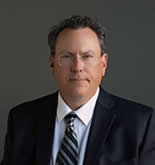Electricity is a vital source of energy in our daily lives. It powers tools, provides light and heat. Our working lives are much improved and efficiency greatly increased thanks to electricity. But what about those situations where power from the grid is unavailable. Well, portable generators are an excellent tool for such a scenario.
Portable generators can provide electricity for uses in remote areas off the grid or projects not yet hooked up to the grid. These power generating tools operate on fuels (for this article I'll focus on gasoline/kerosene). Well stop horsing around and bring one in and get crack'n on the work! Before cranking up a portable generator consider these safety pointers.
Portable generators bring with them specific hazards different than those encountered from grid generated power like carbon monoxide poisoning, electrocution, noise and vibration and fire. But don't fret, by following a few simple safety precautions you can have power and be safe too.
Carbon monoxide. All combusted fossil fuels produce carbon monoxide which is hazardous to anything that breaths. Solution: Use the portable generator outdoors only. Carbon monoxide is not visible nor does it have a detectable odor. Portable generators were responsible for a majority of carbon monoxide deaths involving engine driven tools from 1999 to 2012. So don't take a chance. Keep the portable generator outdoors. (And away from open windows/doors and ventilation intake ports.) Tidbit of knowledge: Use of carbon monoxide detectors is wise in areas near a generator. Carbon monoxide is slightly lighter than air and easily disburses into surrounding areas like crawl spaces or other poorly ventilated areas.
Electrocution hazard. Of course you say, generators generate electricity so what's the surprise here? Well, unlike fixed structures like home or office portable generators are not grounded unless the user grounds them. That means pounding a rod into the ground just as you would for a home or other structure. (There are some exceptions, 29 CFR 1926.404(f)(3)(i)). Second, use a GFCI (Ground Fault Circuit Interrupter). Always. Placement of a GFCI must be at the generator itself, NOT the end of the power line. GFCI's are extremely sensitive (compared to circuit breakers) and will protect workers. Avoid water contact. Yes, portable generators are to be used outdoors and weather being weather rain is a possibility. Some generators are designed to safely operate in adverse weather conditions. Some are not. Selection of the generator you plan to use need be suitable for the outdoor conditions expected. Inspect the portable generator before each use. Use only three pin cords. Inspect all power cords/lines before powering up the generator. (See OSHA Fact Sheet, Grounding Requirements for Portable Generators, https://www.osha.gov/OshDoc/data_Hurricane_Facts/grounding_port_generator.pdf)
Fire hazard. It's the fuel. Gasoline or kerosene. It's flammable. If the flammables are stored inappropriately the container contents/fumes may ignite. When refueling a generator, turn it off and allow the engine to cool down before refueling. Never refuel a running generator. Set up the generator in an area away from ignitable materials.
Noise and vibration. Small gasoline engines can be sufficiently loud/noisy damaging to hearing. By keeping the generator away from the work area noise exposure is reduced. Consider using hearing protection.
So, let there be light. And be safe.
Greg Gerganoff, ASP, CSP, Esq., is an OSHA / MSHA Safety field and compliance expert with experience in the heavy construction, oil and gas, mining, pipeline, and trenching and excavation industries.
©Copyright - All Rights Reserved
DO NOT REPRODUCE WITHOUT WRITTEN PERMISSION BY AUTHOR.










